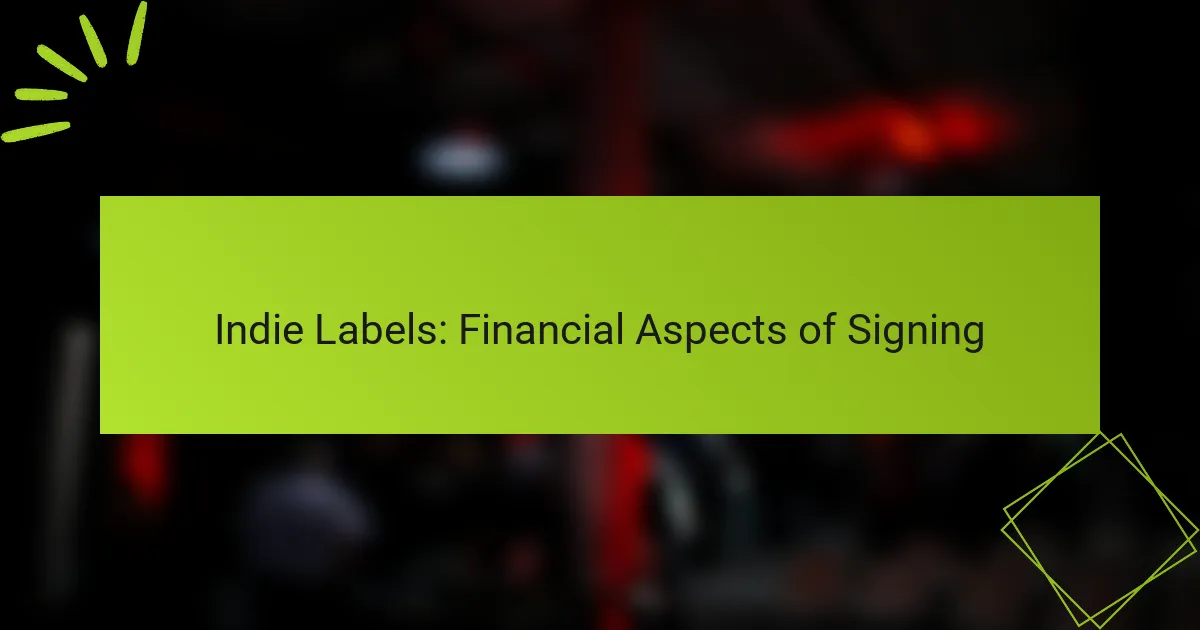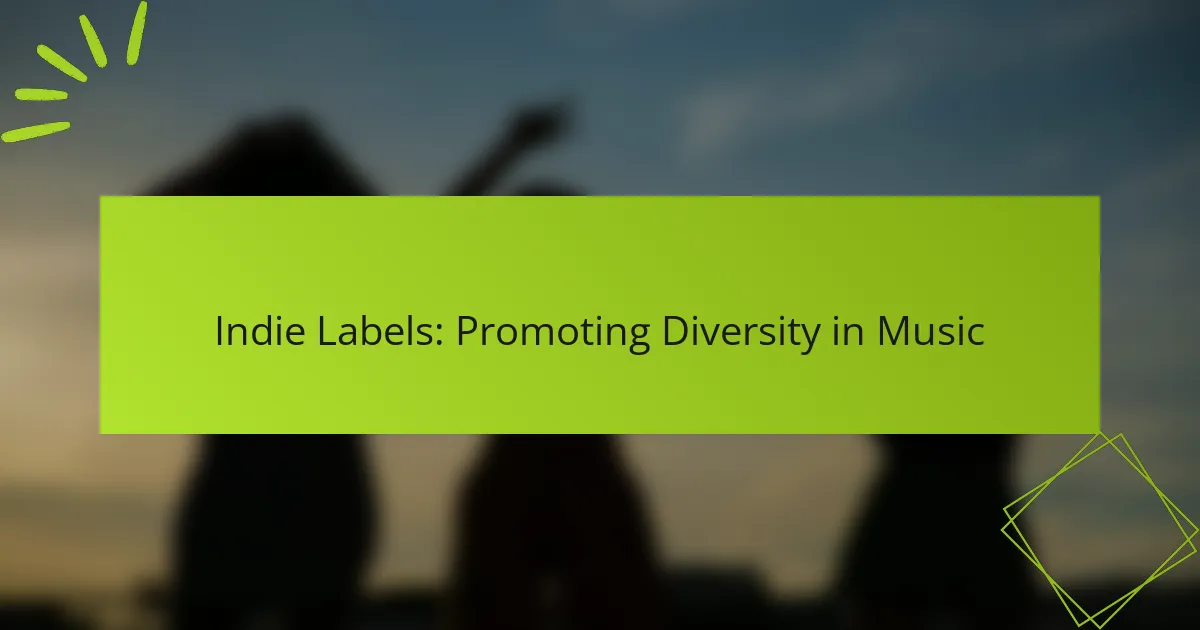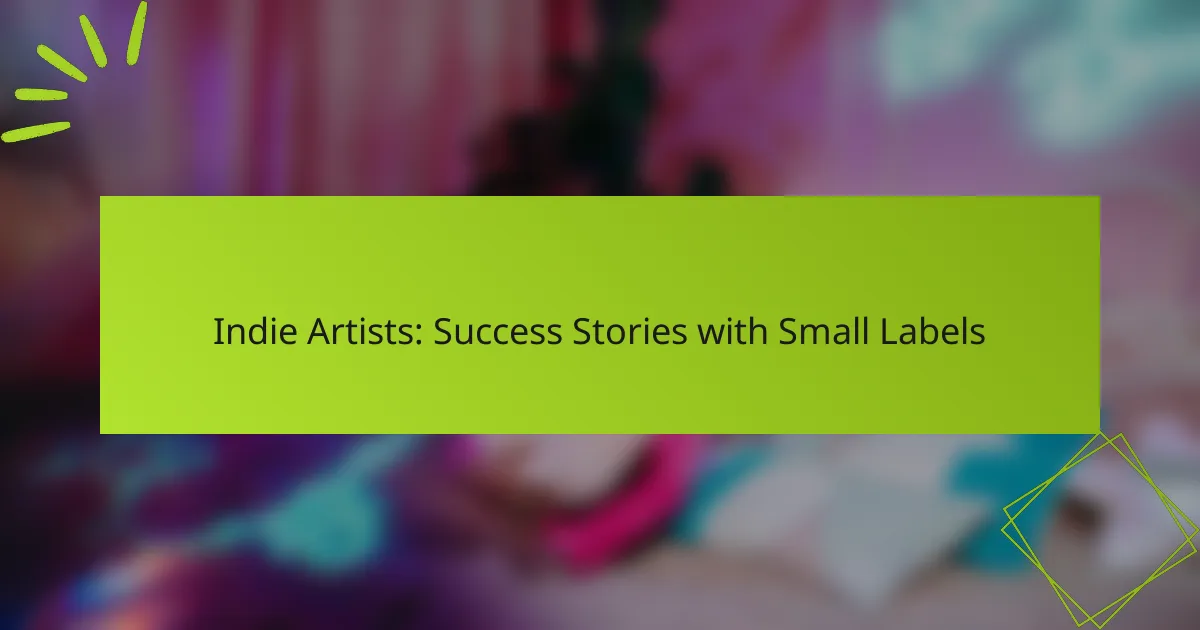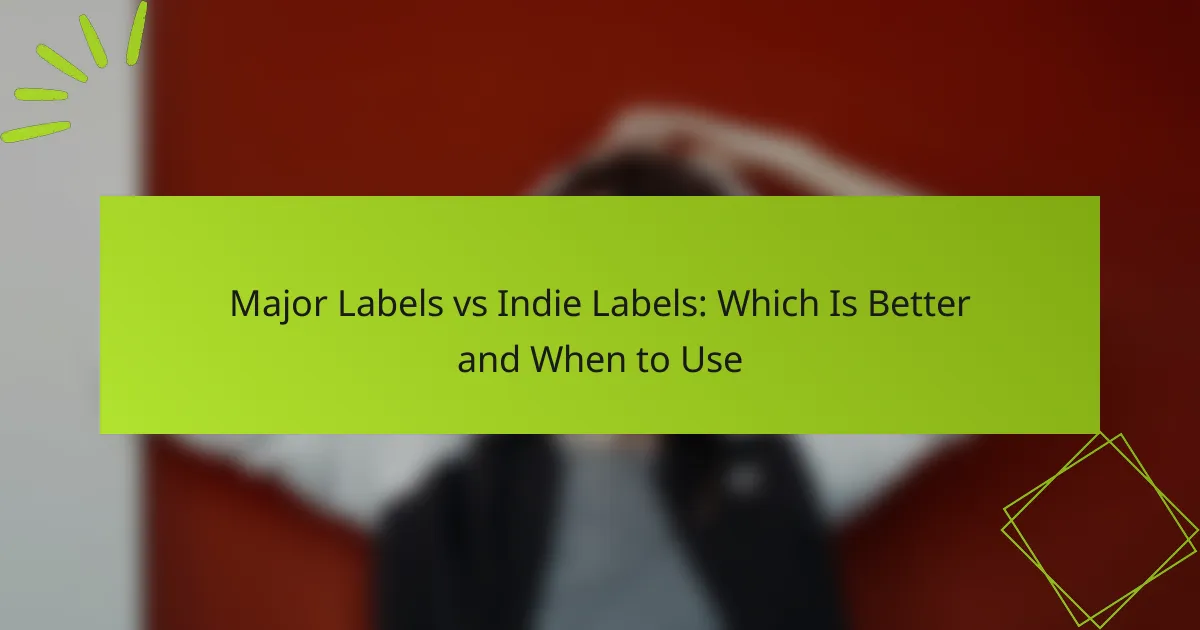Signing with an indie label can offer artists essential financial support for creating, promoting, and distributing their music. However, it’s crucial for artists to understand the associated costs, such as recording and marketing expenses, which can significantly impact their finances. By evaluating key financial metrics like royalty rates and projected sales, artists can make informed decisions that align with their long-term financial goals.

How do indie labels financially support artists?
Indie labels provide financial support to artists through various mechanisms, helping them to create, promote, and distribute their music. This support often includes revenue sharing, advance payments, merchandising, tour funding, and digital distribution earnings.
Revenue sharing agreements
Revenue sharing agreements outline how income generated from music sales, streaming, and performances is divided between the artist and the label. Typically, indie labels may offer a higher percentage of revenue to artists compared to major labels, often ranging from 50% to 70% for the artist, depending on the contract specifics.
Artists should carefully review these agreements to understand what expenses are deducted before revenue is shared. Common deductions may include production costs, marketing expenses, and distribution fees.
Advance payments
Advance payments are upfront sums provided to artists by indie labels to support recording and promotional activities. These advances are recoupable, meaning the label will deduct them from future earnings before any revenue is shared with the artist.
Advance amounts can vary widely, often ranging from a few thousand to tens of thousands of dollars, depending on the artist’s experience and the label’s resources. Artists should weigh the benefits of immediate funding against the obligation to repay it through future earnings.
Merchandising opportunities
Indie labels often assist artists in creating and selling merchandise, which can be a significant revenue stream. This includes items like T-shirts, posters, and vinyl records, which can be sold at shows or online.
Labels may take a percentage of merchandise sales, typically around 20% to 30%, but they can also help with design and production costs. Artists should consider the potential profitability of merchandise and how it fits into their overall brand strategy.
Tour support funding
Tour support funding helps artists cover the costs associated with touring, such as travel, accommodation, and promotional expenses. Indie labels may provide financial backing to ensure artists can reach wider audiences without incurring excessive debt.
This support can be crucial for new artists looking to build a fan base. However, artists should be aware that tour support is often recoupable from future earnings, similar to advance payments.
Digital distribution earnings
Indie labels facilitate digital distribution, allowing artists to earn money from streaming platforms and digital downloads. The label typically handles the distribution logistics and may take a cut of the earnings, which can range from 10% to 30%.
Artists should understand the terms of their digital distribution agreements, including how royalties are calculated and paid. Monitoring streaming performance can help artists maximize their earnings and negotiate better terms in future contracts.

What are the costs associated with signing to an indie label?
Signing to an indie label involves various costs that can significantly impact an artist’s finances. These expenses typically include recording, marketing, legal fees, and production costs, each of which plays a crucial role in the overall success of the project.
Recording expenses
Recording expenses can vary widely depending on the studio, producer, and length of the project. Artists may spend anywhere from a few thousand to tens of thousands of dollars on studio time, equipment, and personnel. It’s essential to budget for both pre-production and post-production costs to ensure a polished final product.
Consider negotiating package deals with studios or producers to manage costs effectively. Additionally, some indie labels may offer to cover a portion of these expenses, so clarify what the label is willing to support before signing.
Marketing and promotion budgets
Marketing and promotion budgets are critical for gaining visibility in a crowded music market. Indie labels typically allocate funds for social media campaigns, music videos, and promotional materials, which can range from a few hundred to several thousand dollars. Effective marketing strategies can significantly enhance an artist’s reach and audience engagement.
Artists should actively participate in marketing discussions with their label to ensure that their vision aligns with promotional efforts. It’s also wise to set aside a portion of the budget for unexpected marketing opportunities that may arise.
Legal fees for contracts
Legal fees for contracts can be a significant expense when signing with an indie label. These costs may include attorney fees for reviewing and negotiating the contract terms, which can range from a few hundred to several thousand dollars. Investing in legal counsel is crucial to protect the artist’s rights and ensure fair terms.
Artists should seek a lawyer experienced in music contracts to navigate the complexities of agreements. Understanding the implications of each clause can prevent costly disputes in the future.
Production costs for physical media
Production costs for physical media, such as CDs or vinyl records, can add up quickly. Depending on the format and quantity, these costs can range from a few hundred to several thousand dollars. Factors like artwork, packaging, and distribution should also be considered in the overall budget.
When planning for physical media production, artists should evaluate the demand for physical copies among their fan base. In some cases, focusing on digital releases may be more cost-effective, especially for indie artists just starting out.
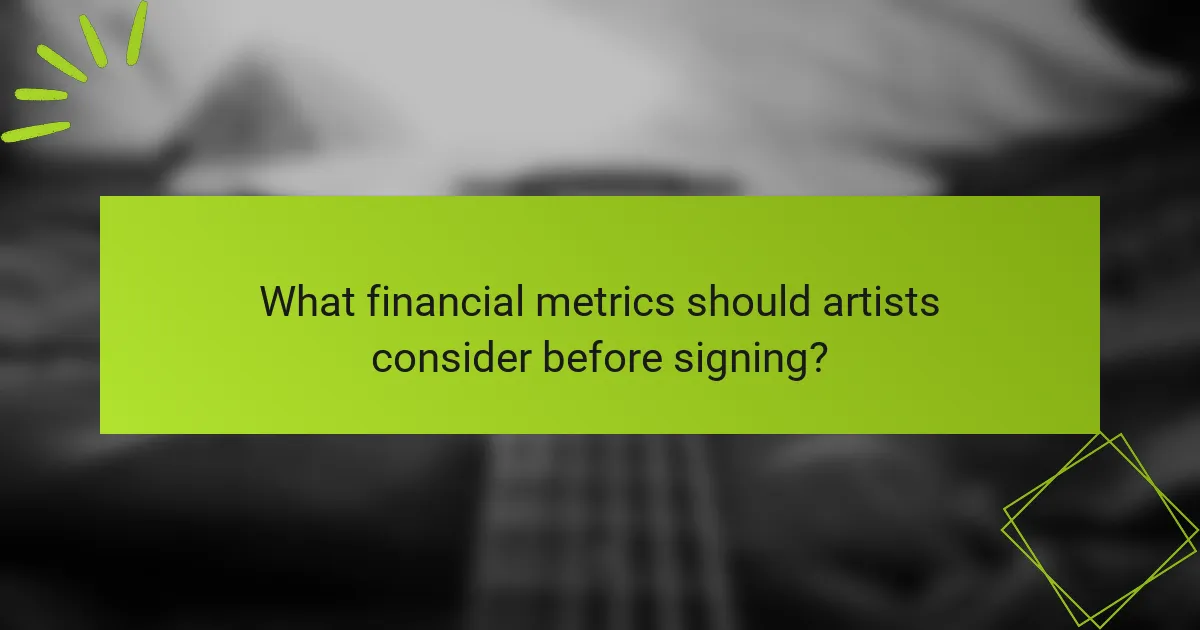
What financial metrics should artists consider before signing?
Artists should evaluate several financial metrics before signing with an indie label, including royalty rates, contract length, break-even analysis, and projected sales figures. Understanding these factors can help artists make informed decisions that align with their financial goals.
Royalty rates
Royalty rates determine how much an artist earns from sales and streams of their music. Typically, indie labels offer rates ranging from 10% to 25% of revenue, depending on the label’s resources and the artist’s negotiating power. Artists should compare these rates with industry standards to gauge fairness.
It’s crucial to clarify whether the royalty rate applies to gross or net revenue, as this can significantly impact earnings. A lower percentage on net revenue could yield less than a higher percentage on gross revenue, so artists must understand the specifics of their agreement.
Contract length
The length of a contract can affect an artist’s career trajectory and financial stability. Most indie label contracts range from one to five years, with options for renewal based on performance metrics. Artists should consider how long they are willing to commit to a label and the potential impact on their creative freedom.
Shorter contracts may allow for more flexibility but could limit initial financial support, while longer contracts might provide stability at the cost of reduced autonomy. Evaluating the label’s track record with other artists can provide insight into how contract length has affected their careers.
Break-even analysis
Break-even analysis helps artists understand how many units they need to sell to cover costs associated with recording, marketing, and distribution. This analysis is essential for assessing the financial viability of signing with a label. Artists should calculate their total expenses and compare them to projected revenue based on the label’s support.
For example, if an artist’s total costs are $50,000 and they earn $10 per album sold, they would need to sell 5,000 albums to break even. This calculation can guide artists in setting realistic sales goals and evaluating the label’s potential to help achieve them.
Projected sales figures
Projected sales figures provide insight into the potential financial success of an artist’s music under a label. Indie labels often provide estimates based on market trends, previous releases, and promotional strategies. Artists should critically assess these projections and consider their own fanbase and marketing efforts.
It’s beneficial to ask for historical sales data from the label’s past artists to gauge realistic expectations. Understanding the label’s marketing plan and how it aligns with the artist’s vision can also influence projected sales and overall financial outcomes.

What are the benefits of signing with an indie label in the UK?
Signing with an indie label in the UK offers artists unique advantages, including tailored support and access to specialized markets. These benefits can significantly enhance an artist’s career trajectory and creative freedom.
Access to niche markets
Indie labels often focus on specific genres or communities, allowing artists to reach dedicated audiences that major labels might overlook. This access can lead to a more engaged fan base and better sales in targeted markets.
For example, an indie label specializing in folk music can connect an artist with festivals and venues that cater specifically to that genre, maximizing exposure and opportunities for live performances.
Personalized artist development
Indie labels typically provide more personalized attention to their artists, fostering a collaborative environment for growth. This can include tailored marketing strategies, hands-on production support, and guidance in artistic direction.
Artists can benefit from close relationships with label staff, allowing for feedback and adjustments that align with their vision, which is often less feasible with larger labels due to their broader focus.
Stronger community connections
Indie labels often have deep roots in their local music scenes, which can help artists build meaningful connections with fans and other musicians. These relationships can lead to opportunities for collaboration and support within the community.
Participating in local events, such as showcases or charity gigs organized by the label, can further enhance an artist’s visibility and reputation, creating a loyal following that is crucial for long-term success.

What are the risks of signing with an indie label?
Signing with an indie label carries several risks, including limited financial resources, potential for mismanagement, and stringent contractual obligations. Artists must carefully evaluate these factors to ensure they align with their career goals and financial expectations.
Limited financial resources
Indie labels often operate with smaller budgets compared to major labels, which can affect the level of investment in marketing, production, and distribution. This limited financial backing may result in fewer promotional opportunities and less support for touring or merchandise sales.
Artists should consider whether the label can provide adequate funding for their projects. It’s advisable to discuss specific budget allocations and potential revenue-sharing models before signing any agreements.
Potential for mismanagement
With fewer resources and personnel, indie labels may struggle with effective management, leading to missed opportunities or poor decision-making. This can manifest in inadequate promotion, ineffective marketing strategies, or failure to meet contractual obligations.
Artists should conduct thorough research on the label’s track record and management team. Seeking testimonials from other artists and understanding the label’s operational processes can help mitigate this risk.
Contractual obligations
Contracts with indie labels can contain various obligations that may restrict an artist’s creative freedom or financial gains. These may include exclusivity clauses, revenue splits, and rights to the artist’s work, which can impact future opportunities.
Before signing, artists should carefully review the contract terms, ideally with legal assistance. Understanding the implications of each clause and negotiating favorable terms can help protect an artist’s interests in the long run.
